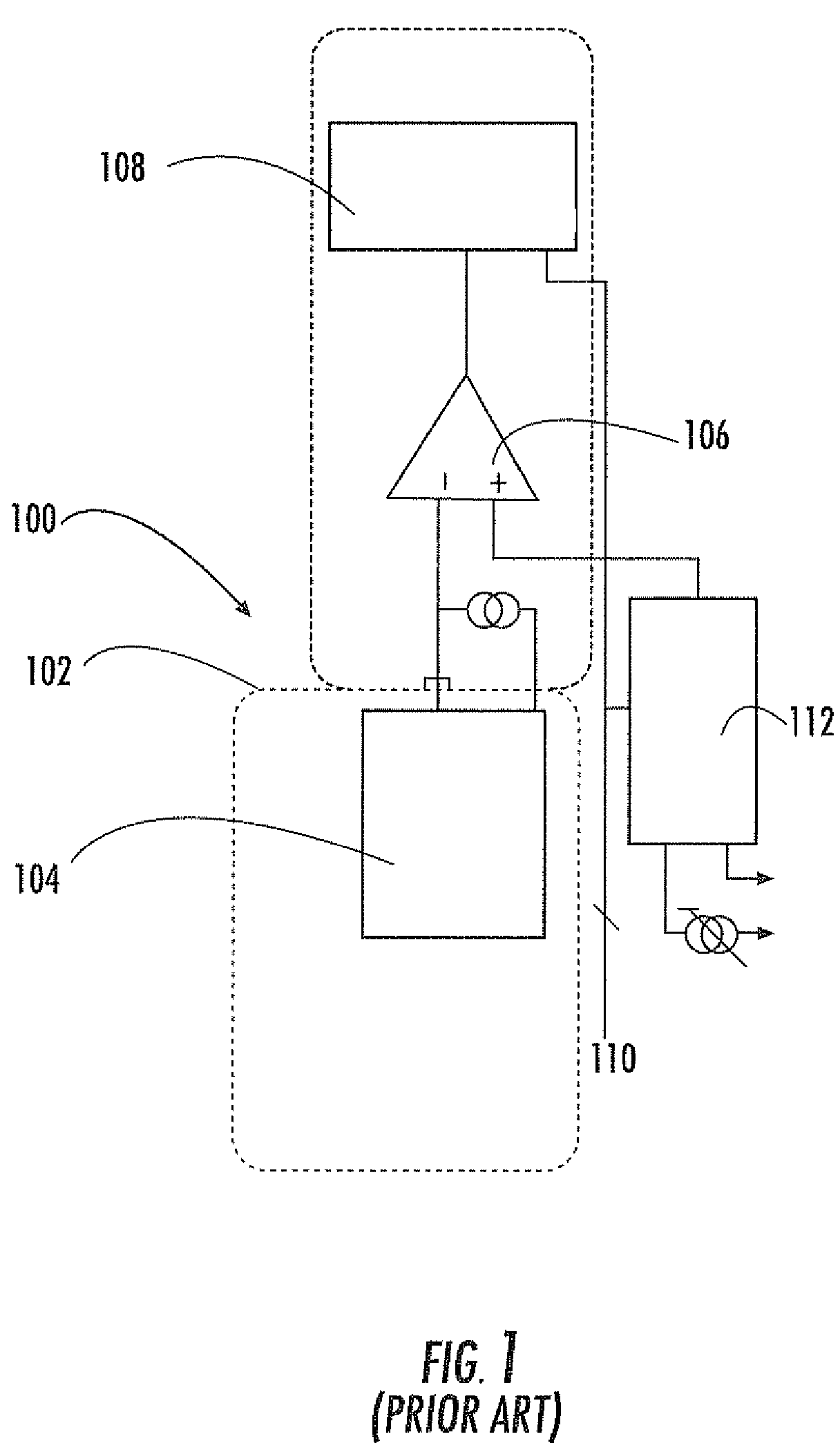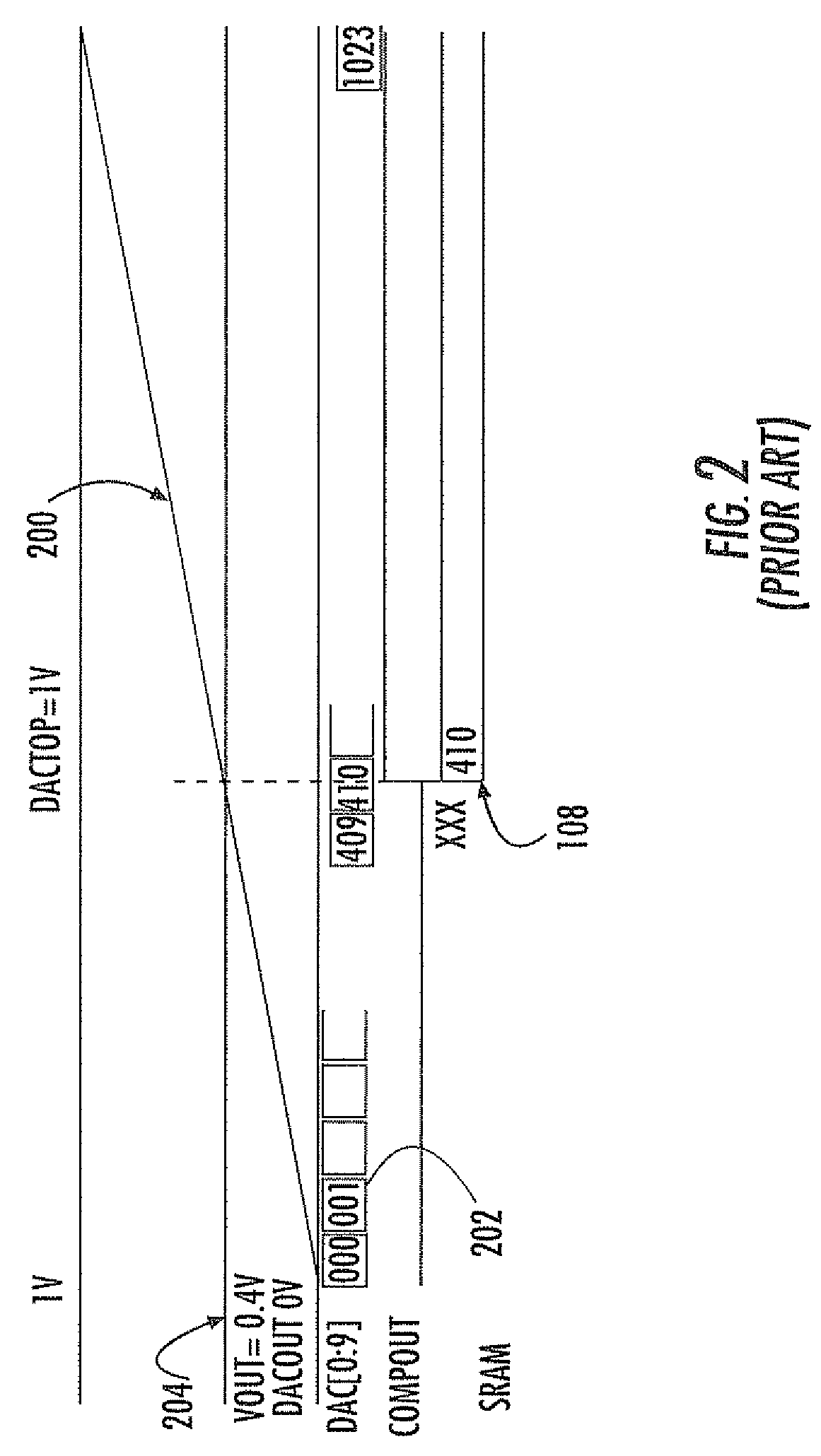Analog to digital converter having a non-linear ramp voltage
- Summary
- Abstract
- Description
- Claims
- Application Information
AI Technical Summary
Benefits of technology
Problems solved by technology
Method used
Image
Examples
Embodiment Construction
[0044]Referring now to FIG. 7, a non-linear, typically quadratic digital ramp generator 700 comprises a memory device 702, an incremental counter 704, a ramp counter 706, and a DAC 707. In a preferred embodiment, the counters 704, 706 are shift registers. The incremental counter 704 comprises a processor 708, a clock input 710, an additive input 712 and an output 714.
[0045]The ramp counter 706 comprises a processor 716, a clock input 718, an incremental input 720 and an output 722. The incremental counter 704 and the ramp counter 706 receive a clock signal from the same clock (not shown) at their respective clock inputs 710, 718. Receipt of the clock signal triggers the processor 716 of the ramp counter 706 to output a ramp code RAMP, currently stored at the ramp counter 706, to a DAC and a data storage device via the output 722.
[0046]Typically, the ramp counter will have an initial code of zero, although non-zero initial codes are possible. Receipt of the clock signal triggers the ...
PUM
 Login to View More
Login to View More Abstract
Description
Claims
Application Information
 Login to View More
Login to View More - R&D
- Intellectual Property
- Life Sciences
- Materials
- Tech Scout
- Unparalleled Data Quality
- Higher Quality Content
- 60% Fewer Hallucinations
Browse by: Latest US Patents, China's latest patents, Technical Efficacy Thesaurus, Application Domain, Technology Topic, Popular Technical Reports.
© 2025 PatSnap. All rights reserved.Legal|Privacy policy|Modern Slavery Act Transparency Statement|Sitemap|About US| Contact US: help@patsnap.com



